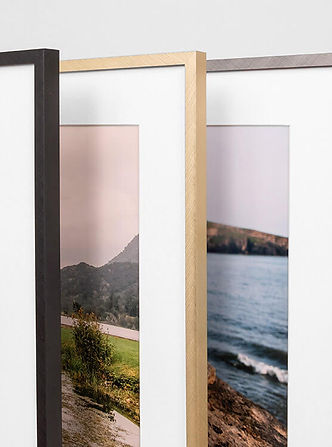
Framing Artworks Like a Pro
A Complete Guide by Yana Evans
Protect and showcase your artwork the right way — learn how to frame graphic works, oil, and acrylic paintings with insights from professional artist and curator Yana Evans (Evans Ink).
Need help framing your artwork?

Introduction
If you've chosen a piece from the gallery you'd like to purchase, please CONTACT ME DIRECTLY and mention the exact title or description of the artwork.
To speed up the process, you may optionally include your full shipping details: full legal name, complete address, and phone number with international code.
I’ll get back to you within 1–2 days with the total cost (including shipping) and next steps.
Your personal information will only be used to process your order and shipment.
Each work is one-of-a-kind — I do not create exact copies, but I’m happy to explore similar concepts based on your preferences.

Framing Components: What Every Artwork Needs

Framing a work of art is more than putting it behind glass — it’s a carefully layered system of components that work together to protect, support, and elevate your piece. From frame mouldings and glazing to mat boards, backings, and spacers, each element plays a vital role in both preservation and presentation. Below, we’ll explore what a complete framing setup can include — and how to choose the right materials for your artwork.
Types of frames for artwork
Choosing the right frame is about more than aesthetics — it’s about protecting your artwork and enhancing its presence. Different frame types serve different purposes depending on the medium, size, and display context. From minimal modern profiles to traditional wooden mouldings, the type of frame you select sets the tone for how your piece is experienced. Below is a guide to the most common frame types used in fine art, and how to choose the one that fits both your work and your vision.
WOOD FRAMES
Wood frames are a classic and versatile choice for fine art. They offer warmth, a natural feel, and a wide range of finishes — from minimalist light oak to deep, carved mahogany. Wood is ideal when you want a timeless, elevated look.

Best For
+ Graphite or charcoal drawings
+ Watercolors and ink works
+ Oil or acrylic paintings on canvas or panel
+ Gallery-style framing with mats
Watch Out For
+ Low-quality MDF or composite woods that warp or chip
+ Cheap finishes that peel over time
+ Frames with poor corner joins
When Not to Use
+ In very humid or unstable climates (unless properly sealed)
+ If the artwork is extremely heavy — unless reinforced
Size Tips & Gallery Standards
+ Frame moulding should be at least 1.5–2 cm wide for graphic works, and 2–5 cm for larger canvases
+ Deeper profiles are preferred for canvases
+ Many galleries use natural or black-stained wood frames for modern and minimalist works
METAL FRAMES
Metal frames, especially aluminum, are sleek, durable, and modern. They’re often used in galleries and exhibitions for their neutral look and clean lines.

Best For
+ Fine art prints
+ Photographs
+ Minimalist graphic works
+ Professional portfolios or certificates
When Not to Use
+ With textured or traditional paintings (they can feel too industrial)
+ In highly traditional or ornate interior settings
Watch Out For
+ Flimsy metal profiles that bend easily
+ Sharp corners on low-quality frames
+ Visible seams or cheap-looking finishes
Size Tips & Gallery Standards
+ Minimum width: 1 cm for small works, 1.5–2 cm for larger prints
+ Depth should accommodate matting and glazing comfortably
+ Widely used in museums for limited edition prints and photography
BOX FRAMES / SHADOW BOXES
Box frames or shadow boxes provide depth between the artwork and the glazing, often using spacers or thick mats. These frames create a sense of depth and protection, especially for delicate or dimensional works.

FLOAT FRAMES (CANVAS FLOATERS)
Float frames are designed for stretched canvas or cradled wood panels. They give the illusion that the artwork is “floating” inside the frame, with a small gap all around.

Best For
+ Oil and acrylic paintings on canvas
+ Wood panel artwork
+ Minimalist gallery presentations
When Not to Use
+ Works on paper unless dry-mounted to panel
+ If the canvas has uneven or delicate edges
Watch Out For
+ Gaps that are too wide (they look sloppy)
+ Unfinished floaters without spacers (can damage canvas edges)
+ Insecure mounting if not properly measured
Size Tips & Gallery Standards
+ Gap between canvas and frame: 3–5 mm
+ Outer frame width: 1.5–3 cm, deeper for larger works
+ Standard in contemporary galleries for large-scale paintings
ORNATE AND BAROQUE FRAMES
Highly decorative frames, often gilded or carved, lend dramatic character and historical weight to an artwork. These are especially fitting for classical or symbolic pieces.

Best For
+ Traditional oil paintings
+ Portraits, allegorical scenes, or religious works
+ Classical or maximalist interiors
When Not to Use
+ Minimalist or modern pieces (creates stylistic dissonance)
+ Small, simple drawings — frame may overpower the work
Watch Out For
+ Faux gold finishes that look cheap under light
+ Heavy frames without proper mounting
+ Overly ornate corners that distract from the artwork
Size Tips & Gallery Standards
+ Should be proportionate to canvas (often 5–10 cm wide)
+ Depth varies, but larger pieces need weighty profiles
+ Often used in historical exhibitions or high-end private collections
Glass options for framing
Not all artworks need to be covered with glass — but for many, especially works on paper, glazing is essential. It protects the surface from dust, UV light, humidity, and accidental contact. Choosing the right glazing can preserve your piece for decades or quietly ruin it if done incorrectly. While drawings, prints, and etchings almost always require glazing, oil and acrylic paintings are rarely glazed because their textured, painted surfaces need to breathe and are naturally more durable. In this section, we’ll explore the four most common types of glazing, where they shine, when they fail, and how to make the right choice for your specific medium.
STANDARD GLASS
A basic, clear glass commonly used in everyday framing. It offers simple protection but lacks UV filtering and has strong glare.
Best for non-archival, low-value works not exposed to light.

Best For
+ Budget-friendly framing
+ Personal or decorative art
+ Pieces displayed in soft indoor light
+ Temporary exhibitions
Watch Out For
+ Strong reflections in bright rooms
+ No UV protection (can fade artwork)
+ Green tint in low-quality versions
+ Heavy and fragile
Not Recommended For
+ Original or archival drawings
+ Artworks exposed to sunlight or spotlights
+ Large-scale pieces (due to weight risk)
+ Valuable or irreplaceable works
If you must use standard glass, keep the artwork away from light sources — and never let it touch the artwork directly
NON-REFLECTIVE (ANTI-GLARE) GLASS
Designed to reduce glare and soften reflections, this type of glass improves viewing in bright or overhead lighting. It lightly diffuses the image but lacks strong UV protection unless specially coated.

Best For
+ Displaying under strong lights
+ Office and gallery spaces
+ Framing dark or highly detailed works
+ Budget-friendly anti-glare solution
Watch Out For
+ Slight softening or haziness over fine details
+ Not all types include UV protection
+ May look dull on glossy prints or high-contrast works
Not Recommended For
+ Hyper-detailed or very light drawings
+ Photography or works with rich blacks
+ Valuable archival art (unless UV-rated)
MUSEUM GLASS
Premium glazing with both anti-reflective coating and 99% UV protection. Offers crystal-clear clarity with virtually no glare. Ideal for preserving and showcasing high-value, light-sensitive artwork.

Best For
+ Archival framing
+ Watercolors, drawings, prints
+ Museums, collectors, and galleries
+ Any art exposed to daylight or spotlights
Watch Out For
+ Expensive
+ Scratches easily — handle with gloves
+ Needs proper cleaning (no ammonia)
Not Recommended For
+ Very large works unless properly supported
+ Framing on a tight budget
+ Projects with frequent transport or high risk of damage
ACRYLIC (PLEXIGLASS)
A lightweight, shatter-resistant alternative to glass. Available in UV-protective and anti-glare versions. Safer for large frames, shipping, and public spaces — but prone to static and scratching.

Best For
+ Oversized artwork
+ Shipping or travel
+ Kid-friendly or public installations
+ Modern, lightweight frames
Watch Out For
+ Static can attract dust to drawings or pastels
+ Scratches easily if not treated/coated
+ Needs specialized cleaners
+ Can slightly distort under pressure
Not Recommended For
+ Unfixed charcoal or pastel works
+ Tight frame spaces (can bow with time)
+ Ultra-high clarity needs without anti-glare coating
If you must use standard glass, keep the artwork away from light sources — and never let it touch the artwork directly
What is archival mat board? (Passepartout)
Archival mat board, often called passepartout, does more than enhance the look of a framed artwork — it protects the piece from direct contact with the glass and from environmental damage. Whether you’re framing a fine graphite drawing or a vintage print, using the right mat board is essential for both aesthetics and long-term preservation.
Museum Glass
Functions:
-
Creates breathing space between the artwork and glass.
-
Enhances the visual presentation.
-
Available in various colors, but white, off-white, or black are classic choices.
✅ Use only acid-free, archival mats to avoid yellowing or chemical damage.
Acrylic (Plexiglass)
Lightweight and shatterproof, great for shipping or large frames. Comes in UV and non-reflective options.

Mounting (Backing & Hinging)
Mounting is how the artwork is attached within the frame.
Museum Glass
Components:
-
Backing Board – Supports the artwork; should be pH-neutral or archival (e.g., foam board, museum board).
-
Hinging Tape – Archival tape used to attach the work without damage.
-
Float Mounting – Artwork appears suspended; ideal for handmade papers or deckled edges.

Spacers and Liners
Used especially in oil painting frames or box frames to create depth or separation.
Museum Glass
-
Liners – Fabric or wood inner borders that sit between the artwork and frame, often used with paintings.
-
Spacers – Clear or hidden materials placed inside the frame to separate the glazing from the artwork without a mat.

How to Frame Graphic Works
Framing graphic works — such as drawings, fine art prints, and etchings — is all about protection and presentation. Unlike oil paintings, paper-based artworks are far more vulnerable to light, humidity, and physical damage. Choosing the right materials and framing technique ensures their beauty and integrity for decades.
Why Glass Is Essential for Paper-Based Art
When framing drawings or prints, glass (or acrylic glazing) is a must. It provides:
-
Protection from UV light, which can fade pencil, ink, or print pigments.
-
A barrier against dust, moisture, and air pollutants.
-
A smooth, clean surface that enhances the art’s visibility.
TERMS OF COMMISSION
If a commission is canceled after the non-refundable payment is made and work has already begun, I reserve the full right to modify, resell, or publicly display the unfinished or completed artwork at my discretion.
Example: Framing a Graphite Drawing (42 × 29.5 cm)
following gallery museum standart
Used especially in oil painting frames or box frames to create depth or separation.
When framing drawings or prints, glass (or acrylic glazing) is a must. It provides:
-
Protection from UV light, which can fade pencil, ink, or print pigments.
-
A barrier against dust, moisture, and air pollutants.
-
A smooth, clean surface that enhances the art’s visibility.
Pencil Drawing
Mat Size Recommendation
For a fine drawing, you typically want 7–10 cm of mat border around all sides to give breathing room and visual balance. Since the piece has a dark background, this space helps separate it visually from the frame and gives it a gallery-style presentation.
-
Inner window: 42 × 29.5 cm (or 41.5 × 29 cm if you want slight overlap)
-
Outer mat size: ~56 × 43.5 cm
(That gives about 7 cm mat on each side)
Mat Color Options
Since the artwork has a dark background and is graphite (greyscale), the mat should:
-
Create contrast without being too harsh.
-
Focus attention on the drawing, not itself.
Recommended Mat Colors:
-
Soft white (natural white) – Clean and elegant.
-
Cool grey or silver grey – Adds subtle sophistication and picks up graphite tones.
-
Charcoal or black – Only if the artwork has a strong light contrast and white margins, otherwise it might swallow the art.
🎯 Best choice: Light grey or museum white, with acid-free archival quality.
Frame Size Recommendation
The frame should be just large enough to contain the matted artwork, with a profile that suits the piece’s mood.
Suggested Frame Size:
-
Match the outer mat size: about 56 × 43.5 cm
-
Frame width (profile): 1.5 to 2.5 cm (or up to 4 cm for more presence)
-
Depth: At least 2–3 cm if float or spacers are used
Frame Color and Material
Since graphite is subtle and neutral, the frame should enhance this delicacy. Choose minimalist and elegant frames — nothing too decorative.
Top Choices:
-
Matte black wood – Timeless, sharp contrast, very modern.
-
Dark walnut or ash wood – Warmer, natural, and beautiful with graphite.
-
Brushed silver metal – Clean, cool-toned, good for contemporary or industrial spaces.
✨ Best all-around pick: Thin matte black wood or ash frame with soft grey mat.

How to Frame Oil and Acrylic Paintings
I do not offer refunds on any artwork, whether commissioned or ready-made. However, I understand that sometimes plans change. Here’s what I can offer:
EXCHANGES ON READY-MADE ARTWORKS
You may exchange a ready-made piece for another of equal or greater value
Shipping is not included and must be paid by the customer
The returned piece must arrive undamaged and in original packaging
Exchanges are not possible if the returned piece is damaged during transit
NO EXCHANGES ON PERSONAL COMMISSIONS
Due to the deeply personal and non-replicable nature of custom commissions (such as portraits of family or pets), these pieces are not eligible for return or exchange.

Example: Framing a Graphite Drawing (42 × 29.5 cm)
following gallery museum standart
Used especially in oil painting frames or box frames to create depth or separation.
Frame Size Recommendation
The frame should be just large enough to contain the matted artwork, with a profile that suits the piece’s mood.
Suggested Frame Size:
-
Match the outer mat size: about 56 × 43.5 cm
-
Frame width (profile): 1.5 to 2.5 cm (or up to 4 cm for more presence)
-
Depth: At least 2–3 cm if float or spacers are used
Frame Color and Material
Since graphite is subtle and neutral, the frame should enhance this delicacy. Choose minimalist and elegant frames — nothing too decorative.
Top Choices:
-
Matte black wood – Timeless, sharp contrast, very modern.
-
Dark walnut or ash wood – Warmer, natural, and beautiful with graphite.
-
Brushed silver metal – Clean, cool-toned, good for contemporary or industrial spaces.
✨ Best all-around pick: Thin matte black wood or ash frame with soft grey mat.
Oil paintings





































